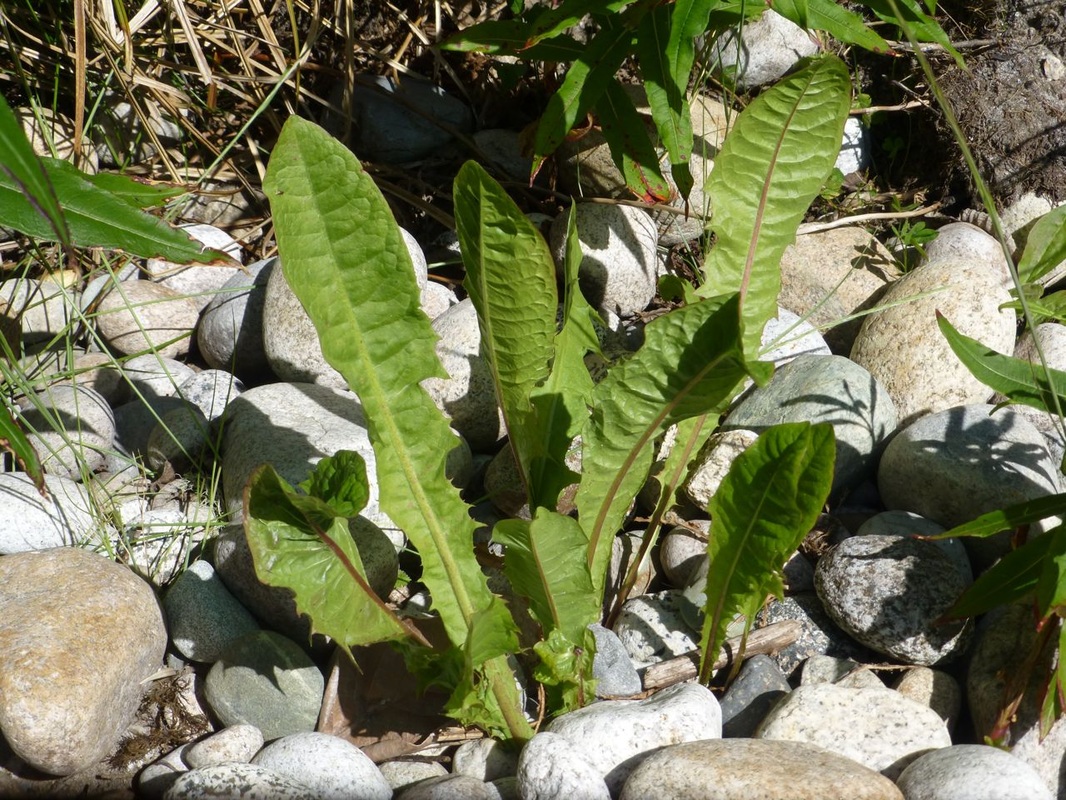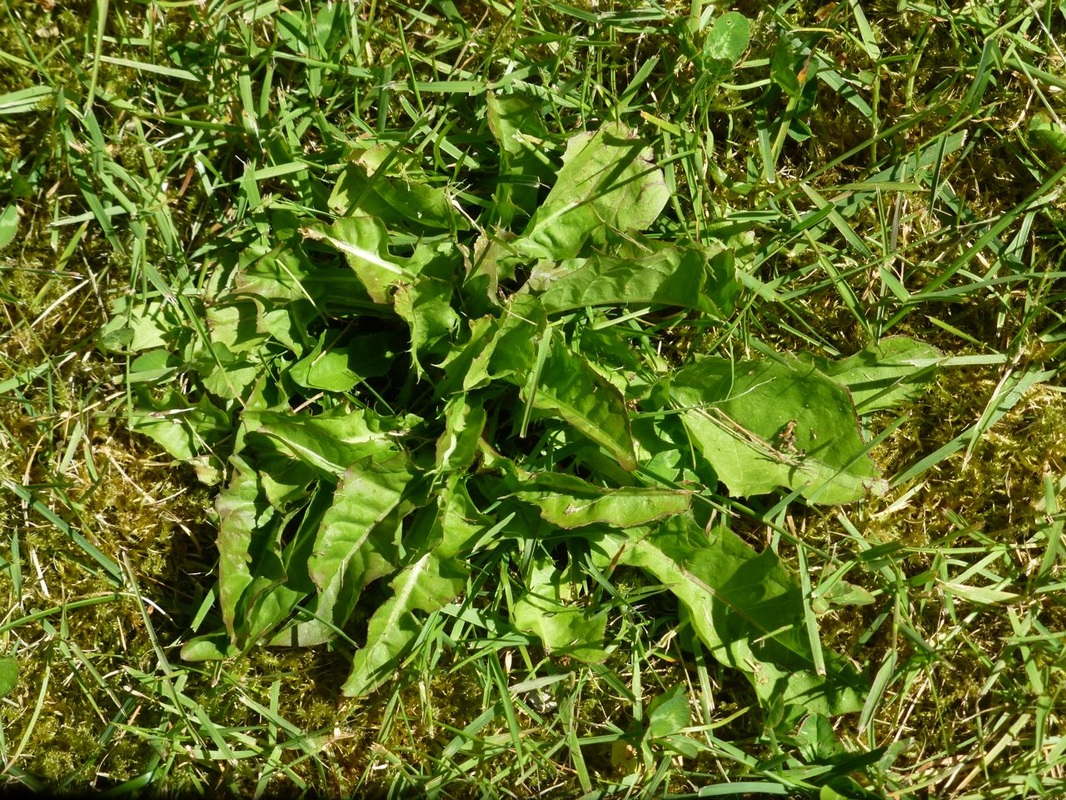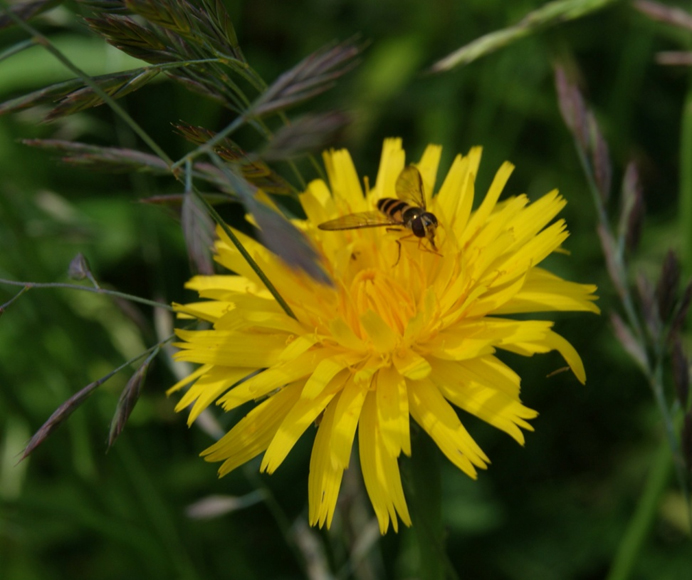Common dandelion • Taraxacum officinale, Taraxacum officinale agg.
Identification
This introduced weedy perennial bears a single large yellow flower head per stem. The stem base may be branched or unbranched, and is surrounded by spoon- to oblong-shaped basal leaves. The leaves are toothed or pinnately lobed and can get to 40 cm long. When cut, the stem oozes a milky juice.
Habitat & Range
The common dandelion grows in disturbed locations such as pastures, roadsides, lawns, and gardens, from low to middle elevations. As it tends to grow in areas of human habitation it is common in the southern portion of BC and is less common along the Central Coast and northward. It is widespread in North America, Asia, and Europe; it is native to Eurasia, and has been introduced to tropical and temperate locations around the world. See the Global Invasive Species Database for more information.
Similar Species
Dandelion taxonomy is currently unresolved and complicated by issues such as hybridization; horned dandelion (T. ceratophorum) is a complex of native species, while red-seeded dandelion (T. laevigatum) is an introduced species with deeply divided lobes along the length of its leaves. See the E-Flora BC common dandelion page for further information.
Human Uses
Dandelion leaves can be used in salads and other dishes. Other food uses for the plant include wine (flowers), beer, and as a coffee substitute (roots). Dandelion root coffee was common during the Second World War as a result of rationing.
This introduced weedy perennial bears a single large yellow flower head per stem. The stem base may be branched or unbranched, and is surrounded by spoon- to oblong-shaped basal leaves. The leaves are toothed or pinnately lobed and can get to 40 cm long. When cut, the stem oozes a milky juice.
Habitat & Range
The common dandelion grows in disturbed locations such as pastures, roadsides, lawns, and gardens, from low to middle elevations. As it tends to grow in areas of human habitation it is common in the southern portion of BC and is less common along the Central Coast and northward. It is widespread in North America, Asia, and Europe; it is native to Eurasia, and has been introduced to tropical and temperate locations around the world. See the Global Invasive Species Database for more information.
Similar Species
Dandelion taxonomy is currently unresolved and complicated by issues such as hybridization; horned dandelion (T. ceratophorum) is a complex of native species, while red-seeded dandelion (T. laevigatum) is an introduced species with deeply divided lobes along the length of its leaves. See the E-Flora BC common dandelion page for further information.
Human Uses
Dandelion leaves can be used in salads and other dishes. Other food uses for the plant include wine (flowers), beer, and as a coffee substitute (roots). Dandelion root coffee was common during the Second World War as a result of rationing.
References
Common dandelion (Taraxacum officinale agg.). ARKive. Accessed 01/14/2015.
IUCN French Committee & IUCN SSC Invasive Species Specialist Group. (2010). Taraxacum officinale (herb). 2010. Global Invasive Species Database. Accessed 01/14/2015.
Pojar, J. and MacKinnon, A. (1994). Plants of Coastal British Columbia. Vancouver, BC: Lone Pine Publishing. P. 270.
Taraxacum officinale F.H. Wigg. In Klinkenberg, Brian. (Ed.). E-Flora BC: Electronic Atlas of the Plants of British Columbia. Lab for Advanced Spatial Analysis, Department of Geography, University of British Columbia, Vancouver. Accessed 14/01/2015.
Authors and editors of page
Kelly Fretwell, Ian Cruickshank, and Brian Starzomski (2015).
Common dandelion (Taraxacum officinale agg.). ARKive. Accessed 01/14/2015.
IUCN French Committee & IUCN SSC Invasive Species Specialist Group. (2010). Taraxacum officinale (herb). 2010. Global Invasive Species Database. Accessed 01/14/2015.
Pojar, J. and MacKinnon, A. (1994). Plants of Coastal British Columbia. Vancouver, BC: Lone Pine Publishing. P. 270.
Taraxacum officinale F.H. Wigg. In Klinkenberg, Brian. (Ed.). E-Flora BC: Electronic Atlas of the Plants of British Columbia. Lab for Advanced Spatial Analysis, Department of Geography, University of British Columbia, Vancouver. Accessed 14/01/2015.
Authors and editors of page
Kelly Fretwell, Ian Cruickshank, and Brian Starzomski (2015).






